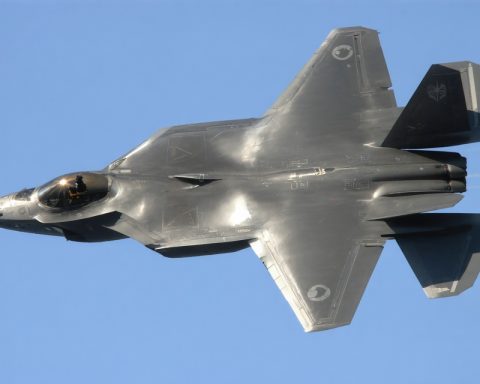Cutting-edge technology may soon redefine aerial warfare for Russia’s military might.
Russia has introduced a groundbreaking helmet-mounted target designation system (HMTDS) designed to enhance the maneuverability and offensive capabilities of its Su-57 fighter jets. This innovative technology aims to bridge the gap between Russian fifth-generation fighters and their American and Chinese counterparts, such as the F-35, F-22, and J-20, according to a report from Defence Security Asia.
With HMTDS, critical information is displayed directly on the pilot’s helmet visor, allowing control over the aircraft and its weapons simply through eye movements. For example, a missile can be directed to where the pilot is looking. While countries like the United States, certain Western nations, and Israel have already been utilizing advanced helmet systems like the Mounted Display System Gen III for years, the arrival of a Russian equivalent is considered a significant upgrade for Russian pilots by international media.
The decision to adopt such a system may have been influenced by extensive combat experience with the Su-57 in the Ukrainian conflict, where the aircraft has undergone rigorous testing scenarios not seen by other jets of its generation. Reports highlight the Su-57’s successful operations in destroying enemy air defenses, engaging in aerial combat within heavily fortified zones, and executing precision strikes.
Furthermore, collaborative exercises with Chinese fighters, including the J-20, may have played a role in accelerating this technological advancement, showcasing Russia’s commitment to maintaining a competitive edge in global air combat technology.
How Russia’s New Helmet Tech is Changing the Game for Fighter Jet Pilots
The introduction of Russia’s helmet-mounted target designation system (HMTDS) has added a new dimension to the capabilities of its Su-57 fighter jets, offering substantial improvements in aerial combat. This new technology not only increases maneuverability but also empowers pilots with revolutionary control through eye movement alone.
Features and Innovations
HMTDS represents a significant leap in aviation technology by providing pilots with an augmented reality experience that overlays crucial flight and targeting information directly onto the helmet visor. This real-time data feed allows pilots to manage the aircraft and its weaponry intuitively, enabling missile control through the direction of the pilot’s gaze.
Unlike previous systems, the HMTDS highlights the latest in Russian innovation, aiming to match and eventually rival Western counterparts like the F-35’s Mounted Display System Gen III. By reducing reliance on traditional cockpit displays and controls, Russian pilots can engage swiftly, enhancing both offensive and defensive maneuvers.
Use Cases and Practical Deployments
The implementation of HMTDS is notably informed by the practical combat scenarios faced during the ongoing Ukrainian conflict. Real-world testing conditions have allowed Russian forces to optimize the system under intense pressure, refining its performance in intercepting enemy defenses and conducting precise strikes.
Moreover, joint exercises with China’s air forces, using jets such as the J-20, have provided additional opportunities to test and improve this advanced technology. Such collaborations underline Russia’s strategy of maintaining a competitive edge in military aviation.
Comparisons and Market Position
While helmet-mounted display systems have been a standard in Western fleets, the arrival of a Russian equivalent represents a significant milestone. The current market is dominated by systems developed in the United States and Israel, but Russia’s HMTDS positions it as a credible peer. Equipping the Su-57 with this technology not only amplifies its market appeal but may also lead to future partnerships or exports.
Predictions for Future Developments
Looking ahead, the ongoing evolution of the HMTDS could shift the landscape of aerial warfare. As the system matures, we might see further enhancements like voice controls or integration with autonomous drone networks. Russia’s advancements could spark a new wave of innovation across global air forces adapting to these high-tech enhancements.
For related insights, visit Defense Talk.











